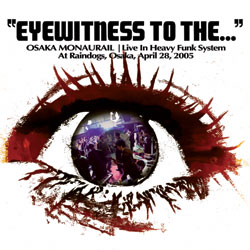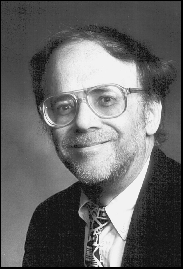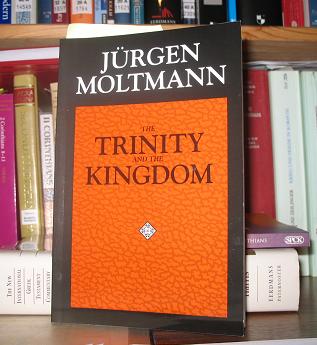It’s getting late again, but in this post I want to respond to the helpful comments of
Jon Rumble to my last post in which I suggested an argument in support of Wright’s reading of 2 Cor 5:21. As I wrote my response it quickly became clear that, for clarity’s sake, this was better posted on the main blog page given its length and number/letter structuring. Jon’s words are italicised with my comments following each chunk.
I haven't read Wright's book, but (I think) there are some problems with the argument as you present it here.
Hi Jon, first thanks for this feedback and for helping me to work through this passage.
Just to point out: this isn’t Wright’s argument exactly – he simply mentions the general context as evidence for his argument. The problem with this is that the general context speaks not only of the apostolic ministry, but the message as well. Hence I offer an attempt to analyse the context in more depth.
For a start, is the "pattern" really there at all? v19 is a clarification of v18 so the repeated themes needn't constitute a pattern. v20 doesn't really fit your scheme; it's a conclusion to everything he's been saying, not a direct flow-on from 19b.
That v19 is a clarification of 18 is not something I would dispute. The simple point is that in both verses a straightforward duality of theme is apparent. Namely, a) an activity of God and b) the consequent giving and entrusting of this message to ‘us’. This is why, I suggest, v. 20 doesn’t function as a conclusion of vv. 18-19 as it only mentions one aspect. It continues the theme for sure; Paul is detailing further his ministry (‘we are ambassadors …’, ‘we entreat …’). Thus, v. 20 won’t really fit my scheme only if the scheme is understood too inflexibly. The simple point is that the themes in these verses are dual, and that there is some structuring of this duality. I submit that this is a fair claim, but what do you think?
Secondly, if we were to accept the pattern; why not read it as v21 (statement concerning message), 6:1 (statement concerning ministry). Why should the statement about his ministry be "precisely when it would be expected following a hina construction" (none of the other examples in the pattern contain hinas), and not in 6:1?
I did wonder if 6:1 could function as you suggest. However, it was the presence of the hina in v21 that persuaded me against this reading. It arguably doesn’t matter that the previous verses contain no hina, the duality of theme is established anyway. However, the hina in 5:21 does make explicit this thematic duality, provokes it, if you like. If the sentence had no hina, then reading v21 as a ‘statement concerning message’ and 6:1 as a ‘statement concerning ministry’ would be possible. But the hina gets in the way, instigating the recognition of the previous thematic duality before one gets to 6:1. Hence, as I suggest, 6:1 simply continues that started in v21b.
Finally, the logic of Christ bearing our sin so that his righteousness can be imputed to us makes a lot of sense to me; but what would it mean that Christ became sin for us (?us all/Paul?) SO THAT Paul & co could become a symbol of God's covenant faithfulness? I don't see the logic; maybe I'm just not getting it but it isn't that saying that Paul's ministry was the (or a) purpose of Jesus bearing our sin?
I think the logic of the passage read as ‘Christ became sin for us
so that Paul and company become the (embodiment of the) righteousness of God’ makes
better sense in the context than the traditional reading for the following reasons.
1) My reading makes explicit the thematic duality most clear in 18-19. On the one hand there is God’s gracious reconciling activity, and on the other, in light of this one could say, the ministry of reconciliation that has been given because of this divine activity. This is exactly the logic of v21 in Wright’s reading.
2) This sort of structure of reasoning in this subject field is reflected elsewhere in Paul. As I read in my morning ‘devotional’ study just today:
‘(13) Christ redeemed us from the curse of the law by becoming a curse for us -- for it is written, “Cursed is everyone who hangs on a tree” – (14) in order that in Christ Jesus the blessing of Abraham might come to the Gentiles, so that we might receive the promise of the Spirit through faith’
(Galatians 3:13-14. Interestingly, Wright comments that ‘What is in Romans said of “sin” is here said of the “curse”’ –
Climax, p. 152).
To make the structure clear:
a. v13 Christ became curse for us (this emphasis is expanded with the Deut 21 citation).
b. v14 hina (in order that) the blessing of Abraham comes in Christ … the promise of the Spirit.
(a) is obviously equivalent to 2 Cor 5:21a while (b), being joined in the same way as in 5:21, with a hina, corresponds to becoming the righteousness of God (also ‘in him’). Indeed, for Paul – understood with an ear to the covenantal ground - the righteousness of God comes to expression in the world precisely as the fulfillment of the promise, as the blessing of Abraham.
Hence, even if the flow of thought I’m suggesting is denied in 2 Cor 5:21, it is certainly a Pauline way of reasoning, as seen in Gal 3.
3) Notice, too, your wording: ‘Christ bearing our sin so that
his righteousness can be imputed to us’. However, as I noted in the original argument, the passage speaks of
God’s righteousness not Christ’s. The courtroom scene painted by Wright in his writings would make an imputation of the judges righteousness to the charged an unusual, unnatural claim. An imputation of God’s righteousness to believers would then have to be positively substantiated, and I would argue that the passage provokes another reading altogether.
I would add, I still think we can speak of the imputation of God’s righteousness in light of the ‘infused righteousness’ debate (a suggestion made in one of Mike Bird’s papers on the subject)
Thanks for this and any further feedback, Jon - or anyone else reading this.











